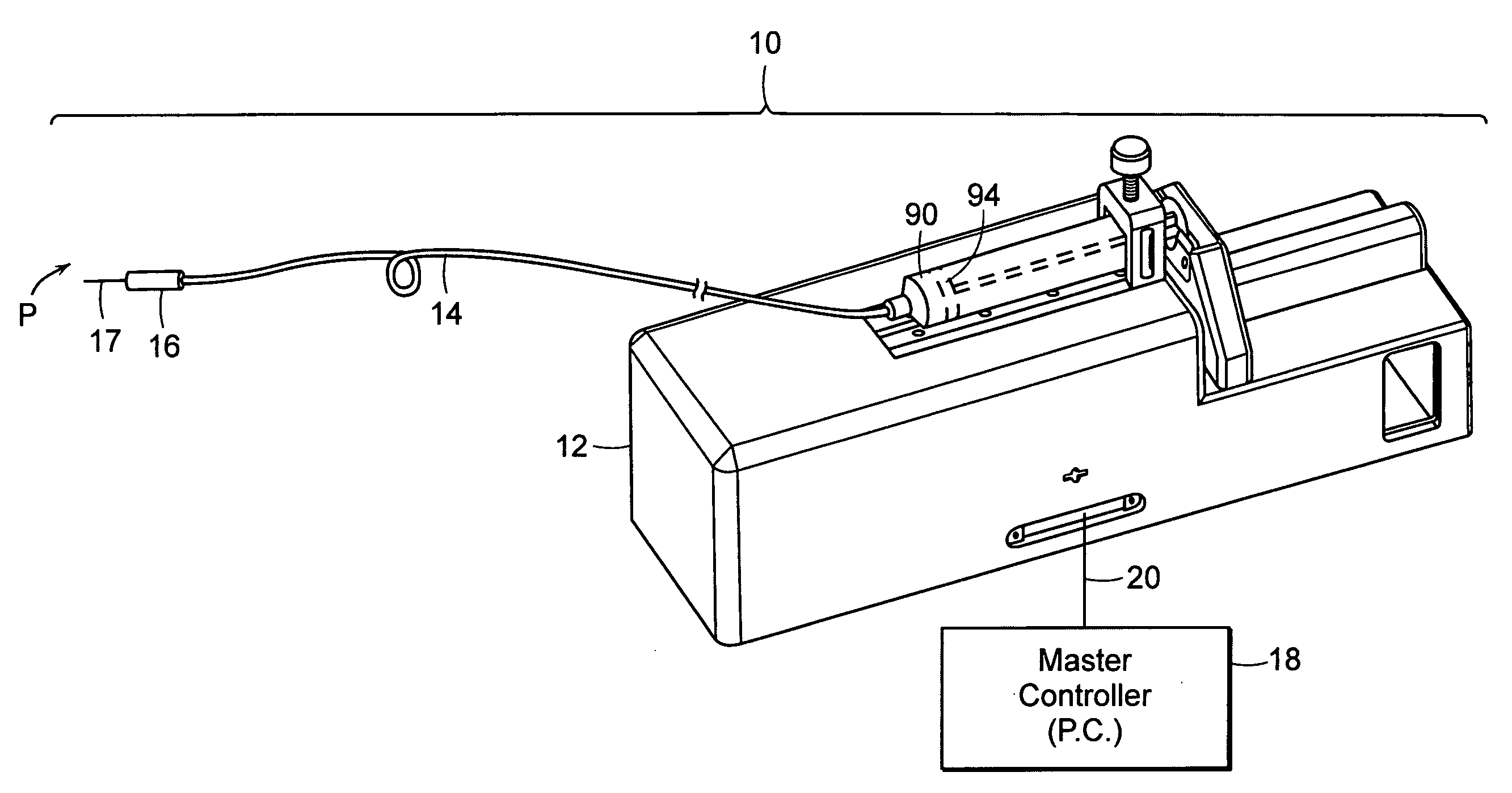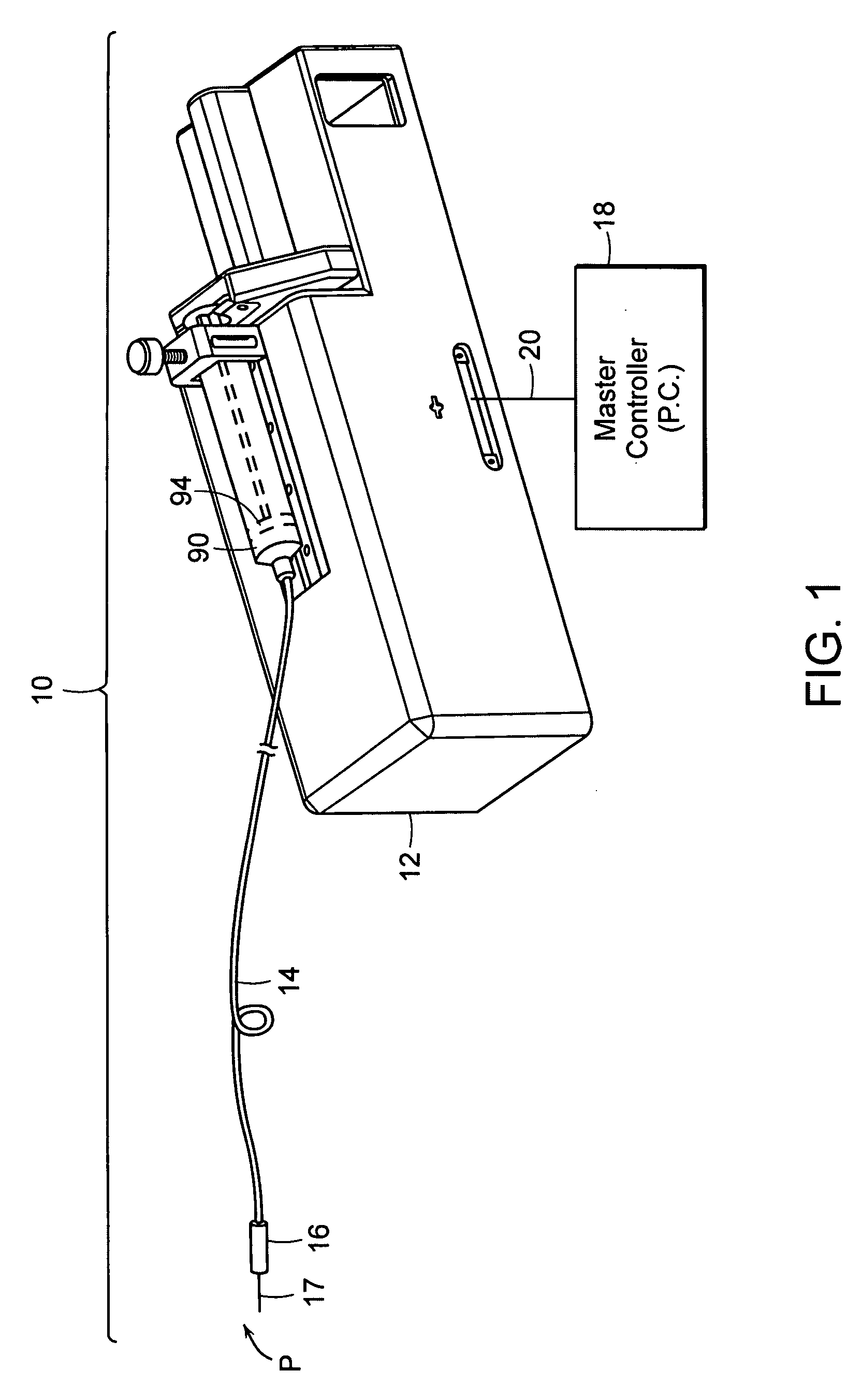Drug infusion device for neural axial and peripheral nerve tissue identification using exit pressure sensing
- Summary
- Abstract
- Description
- Claims
- Application Information
AI Technical Summary
Benefits of technology
Problems solved by technology
Method used
Image
Examples
Embodiment Construction
[0049] The subject invention pertains to a system for delivering drugs such as an anesthetic, under pressure into a patient's tissues. Importantly, due to a variety of factors, injected fluid disperses through a tissue at different rates, causing the fluid exit pressure to vary. The present inventor has discovered that this exit pressure (or an internal pressure related to the exit pressure) is indicative of, and may be used to identify several types of tissues.
[0050] The present invention provides a method and device that enables the practitioner to accurately identify central or peripheral nervous tissues and associated structures (i.e. the epidural space, extradural space) and perform a diagnostic and therapeutic procedure. The current device utilizes the exit pressure of a fluid from a needle or catheter (“the injector”) following placement of the needle / catheter within the tissue in order to properly identify the accuracy of placement and to monitor the (correct) placement dur...
PUM
 Login to View More
Login to View More Abstract
Description
Claims
Application Information
 Login to View More
Login to View More - R&D
- Intellectual Property
- Life Sciences
- Materials
- Tech Scout
- Unparalleled Data Quality
- Higher Quality Content
- 60% Fewer Hallucinations
Browse by: Latest US Patents, China's latest patents, Technical Efficacy Thesaurus, Application Domain, Technology Topic, Popular Technical Reports.
© 2025 PatSnap. All rights reserved.Legal|Privacy policy|Modern Slavery Act Transparency Statement|Sitemap|About US| Contact US: help@patsnap.com



